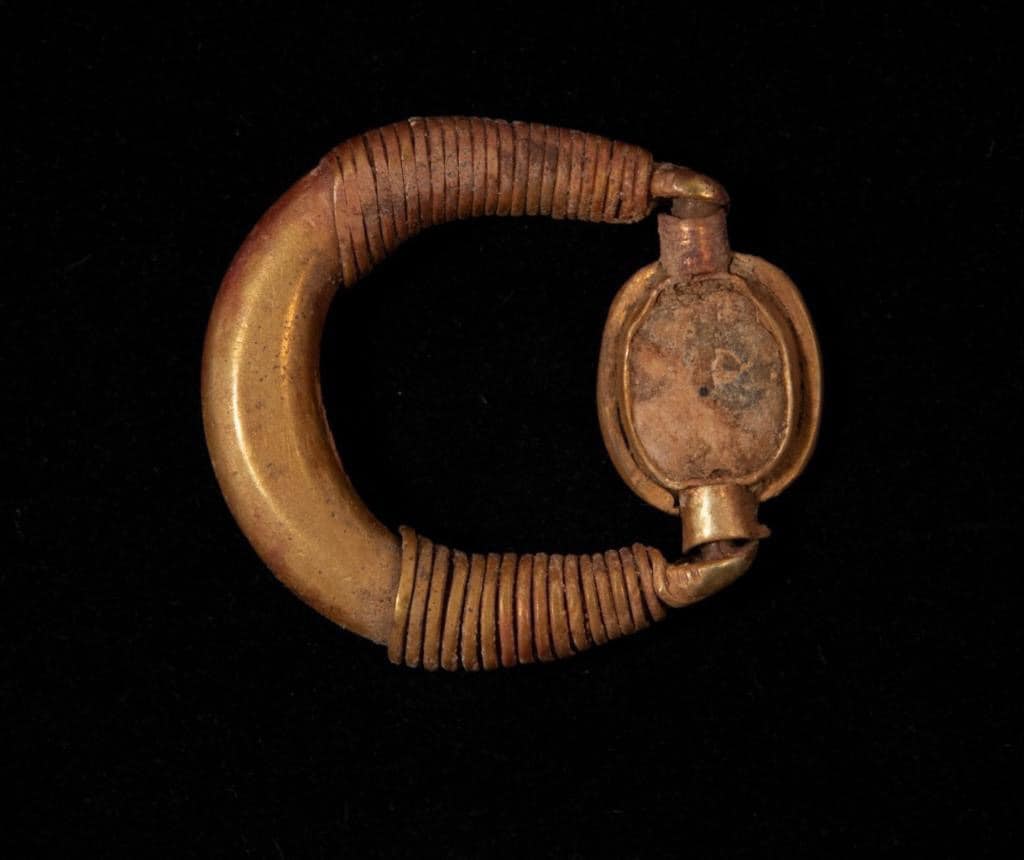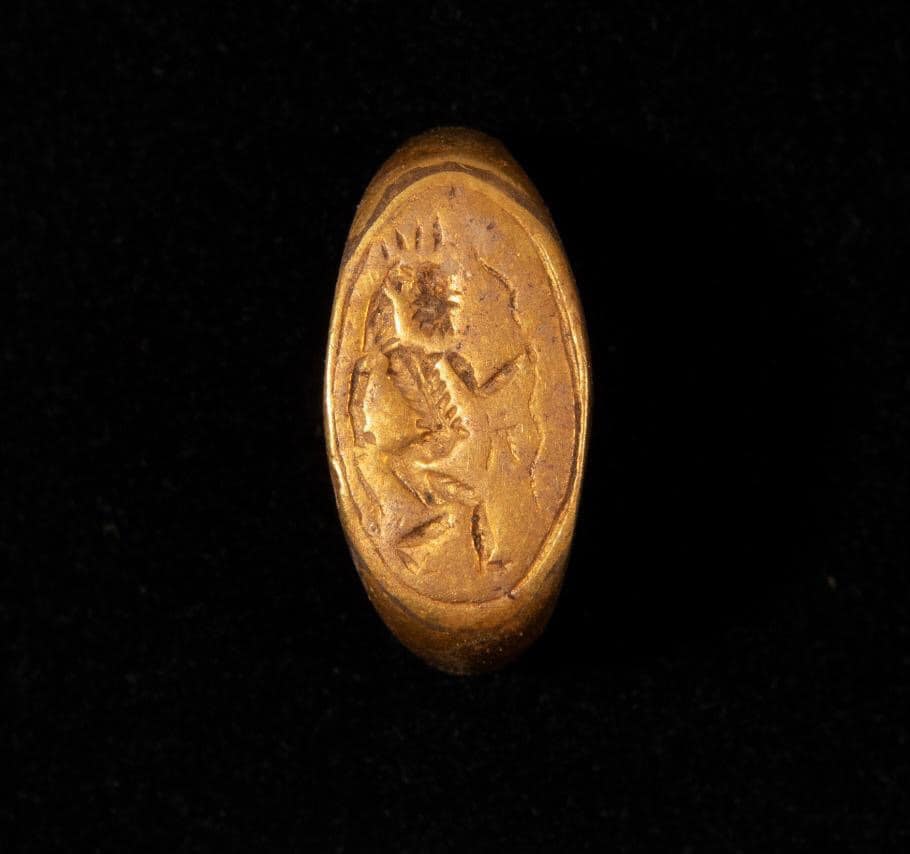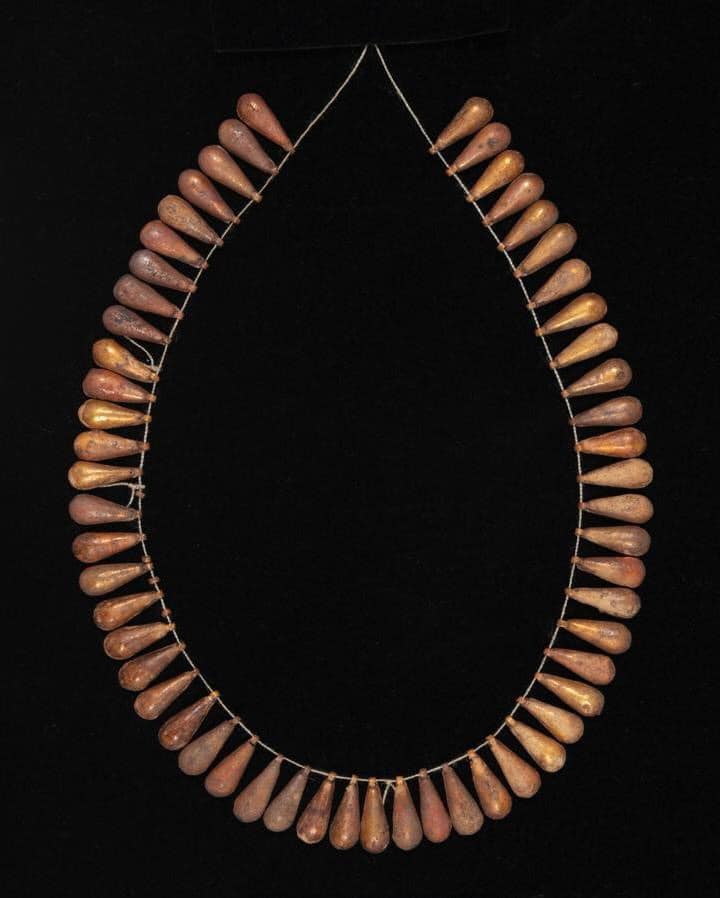January 06, 2023
The Egyptian-British archaeological mission, affiliated with the University of Cambridge and operating in the Tell al-Amarna antiquities area in Al-Minya governorate, uncovered a burial site in the Northern Cemetery.
Dr. Mostafa Waziry, Secretary-General of the Supreme Council of Antiquities, indicated that the mission has been working in the Northern Cemetery since 2010. The team is specifically interested in studying the social and economic status of the city’s residents at Tell al-Amarna. The mission is also focused on the types of food and common diseases in this period of ancient Egyptian history.
The burial contained three golden rings, one of which is decorated with the figure of the deity Bes, god of children and childbirth, and contains a hieroglyphic text that reads "Sat-nebet-tawi", meaning the “daughter of the lady of the Two Lands”. In addition, a small necklace with gold beads was found within the burial.
Dr. Anna Stevens, the deputy head of the British mission, added that the mission has been working at the site since the 1980s. Since then, the mission has uncovered many archaeological finds and structures at Tell- al-Amarna and has carried out restoration work of mud-brick buildings, the remains of houses and palaces, and the Small and Great Aten temples.
It is worth noting that the area of Tell al-Amarna is considered one of the most important archaeological areas in Egypt, as it was the capital of Egypt during the reign of King Akhenaten, who called for monotheism and the worship of the Aten. He dubbed his city “Akhet-aten” meaning “Aten’s horizon”.
The city’s remains include various religious structures such as the Great Aten temple and the Small temple, in addition to the royal palaces and large houses belonging to members of court and senior officials. The site also includes 25 tombs carved in the eastern mountain belonging to senior officials and priests.




Juan Jose Lopez Galvan
If you wish to receive more information on our new tours, events and news of our portal, please enter your e-mail address:
